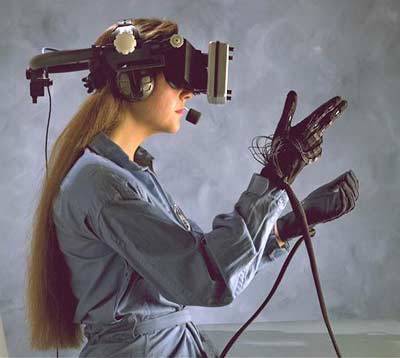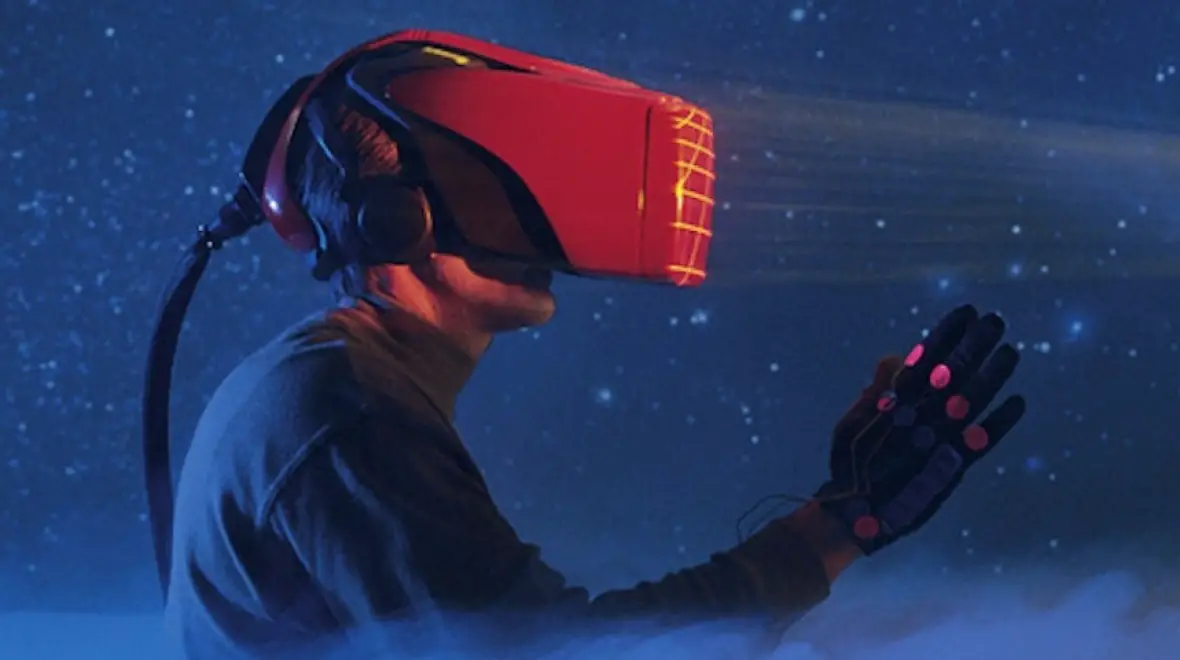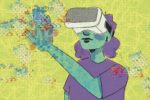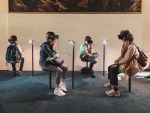VR: Then and Now
Virtual reality has been a popular concept for decades. Now that it’s here, how does it stack up to its sci-fi predecessors?
By Maria Alvarado, Savannah College of Arts and Design
Nowadays, it’s easy to look at virtual reality (VR) headsets and think that they fulfill all the promises made by science fiction movies of the past.
They do what they are supposed to do, which is tricking the human brain to make it believe that the human body is actually walking through a real village in the Dark Ages. Still, I think that in order to measure the success of the new most popular gaming system, it’s also important to evaluate the point of view of people in the past and what they expected from virtual reality.
Back in the 90s, graphic developers were constantly working to develop software that would allow them to create a three-dimensional world that could be explored by audiences.

The first prototypes of virtual reality included headsets, tracking motion sensors, rotating screens and other gadgets created to make the experience more realistic. At the time, the hype for VR was so big that people soon started coming up with different uses for the system.
Even though the first VR headsets in the 90s weren’t totally similar to the ones available in the present, they still share a resemblance that shows that people in the past were on the right track. Much like current VR headsets, the older versions also had a small screen, lens, inertial sensors and stereo headphones. The weight of the product is perhaps the biggest difference in the design.
In fact, the original prototypes and designs for VR headsets were about the size of the Nintendo 64. Imagine wearing the Nintendo 64 as a hat: Clearly the size was an inhibitor and dissuaded further development until the technology existed to make them smaller.
Since the main goal of virtual reality was always to create a different reality that allowed interaction, it’s not too surprising to see that most of the excitement in the 90s was directed toward the world-building aspect. After watching movies like “TRON,” living inside a virtual world and creating 3D worlds seemed to be the biggest attraction of the still very-experimental computer technology.
Yet, among the many expectations for VR, many hoped that the new invention would serve to make certain jobs less strenuous.
For example, architects and designers viewed virtual reality software as a tool that would make visualizing, testing and redesigning projects easier. With virtual-reality sets and software, architects and engineers were hoping to be able to show their clients how the finished product would look and make quick changes to satisfy clients’ needs.
An “ABC” report about virtual reality from 1991 shows that it was also possible to use virtual reality software to allow the audience to interact with various objects in a room, which made redistributing the space inside a room an uncomplicated and funnier task to complete.
Apart from making designers’ and architects’ lives a lot less stressful, early VR also hoped to be an essential tool in making the country a safer place. Both the National Aeronautics and Space Administration (NASA) and the U.S. military were already testing virtual reality to recreate the surface of other planets or foreign countries.
While NASA used the software to recreate how astronauts and robots would explore the floor of Mars, the armed forces made use of virtual reality to simulate high-risk situations and create strategies to prevent them.
Because the software was still in development and relatively new, virtual reality systems cost people between $50,000-$200,000—not exactly the kind of Christmas present every child could hope for. Even though virtual reality sets were “produced en masse” during the 90s, they weren’t the kind of product that one could find in a trip to the electronics store.
Virtual reality was so inaccessible that, as an alternative, early adopters came up with motion simulators. Although motion simulators weren’t as fancy-sounding and advanced as virtual reality, they were still pretty fun to experience and surely managed to amaze the kids who couldn’t spare thousands of dollars on a gaming platform.

It might be hard to remember at first, but back in the 90s most arcades and fairs had a virtual motion simulator. In case the image is hard to recall, motion simulators looked like vans without wheels. The ride consisted on people going inside the metal container, sitting down in front of a small screen and watching short movies while the simulator started shaking and jumping to feel like a roller coaster ride.
It was an easy alternative for people who were afraid of rollercoasters or didn’t have a license to drive a car. But more than that, it was also one of the first interactions that regular people had with the world of virtual reality.
Currently, the public has focused on the use of virtual reality as a gaming platform. With a much more accessible price and different models and characteristics to choose from, VR headsets have become an even more popular product amongst avid gamers. Even though world-building isn’t yet an option for those who aren’t extremely familiar with coding and graphic design, there are already games available that allow people to explore beautiful and realistic landscapes.
Virtual reality has not been incorporated into the majority of workplaces in the country yet. Due to the constant updates in technology and software, most companies find buying VR sets unnecessary. While virtual reality poses a nice alternative to computers, working with VR would mean having to train most of the employees to be able to comfortably and effectively manipulate the system. As a result, most workplaces are happy working with the most current update of their favorite graphic design software.
For now, people seem to be happy with the progress of virtual reality over the years. After all, many didn’t expect to be able to actually play VR games for at least another decade. With that said, it’s obvious that the world can’t wait to see how virtual reality evolves in the near future.


















[…] nevertheless, goals to take its virtual reality experiences one step additional than the different headsets. Although the firm’s successes have been […]
[…] a fascinating precedent for the rest of their show: there was no barrier between Superorganism’s virtual reality act and the individuals playing music. In this way, the band is extraordinary because they take […]
[…] a fascinating precedent for the rest of their show: there was no barrier between Superorganism’s virtual reality act and the individuals playing music. In this way, the band is extraordinary because they take […]
[…] a fascinating precedent for the rest of their show: there was no barrier between Superorganism’s virtual reality act and the individuals playing music. In this way, the band is extraordinary because they take […]